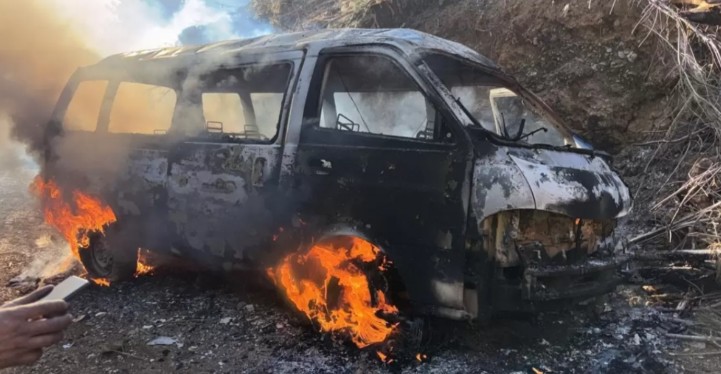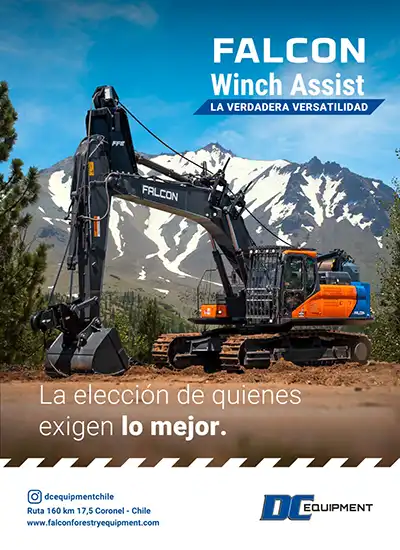H2V Manager: "We Can Produce Sustainable Fuels Using Residual CO₂ from the Forestry Industry"
In conversation with Diario Concepción, Javier Soubelet, Manager of the Biobío Green Hydrogen Regional Strategic Program, shared insights on Biobío's progress regarding green fuel and the use of residual CO₂ from the forestry industry for fuel production.
What stage is the Biobío Region at in terms of Green Hydrogen?
H2V Biobío is a strategic program by Corfo Biobío, where we have a governance structure involving 59 organizations. We work across various focus areas, addressed by technical committees within the governance framework and guided by an executive committee overseeing strategic guidelines. We began in 2023 by forming an initial governance body with 14 institutions and developed a first Roadmap, officially launched in April 2024. Over these two years, we've gained significant learnings, and the evolving industry landscape has led us to update our Roadmap—something we planned to do biennially.
Alongside this, there’s a parallel process to update the National Green Hydrogen Strategy, which is revised every five years, making this year’s update timely. Thus, 2025 marks a period where some cycles close and new ones begin. In this renewal, we took a step forward by shifting from isolated regional efforts—Antofagasta, Magallanes, and Biobío—under the national strategy’s umbrella, toward an integrated territorial approach where regions collaborate under a unified National Integrated Strategy.
Now, we’re driving development from the territory to align cohesively with the central level.
In this framework, Biobío plays a distinct role compared to Antofagasta and Magallanes. Those regions excel due to their natural resources, enabling cheap renewable electricity and, consequently, cheap hydrogen, positioning them as green hydrogen exporters. Biobío, however, stands out for its industrial vocation. Our industry comprises clusters that converge across various sectors, collaborating alongside port and logistics ecosystems.
This is crucial for our goal of producing the "world’s cheapest green hydrogen by 2030." But to export hydrogen, we must first build an industry. This requires fostering an entrepreneurial culture—something Biobío already has. Thus, our role is to rapidly activate the industry, likely ahead of other regions, while they focus on exploiting natural resources and mass hydrogen exports.
Biobío has three strategic objectives for its future vision. First, we must decarbonize our industry, which serves two purposes: contributing to Chile’s Paris Agreement commitments and enhancing Biobío’s market competitiveness. Carbon footprint reduction is increasingly pressured, and now is the time to act.
We have two Corfo-awarded projects in Biobío to assemble electrolyzer plants—equipment that transforms water into hydrogen. Additionally, we need to open new markets. As a region, our primary economic activity is forestry, which has a unique trait: it emits significant CO₂ with a carbon-neutral cycle. This means the CO₂ released by forestry is recaptured by the same forests, resulting in no net atmospheric increase.
We can capture this CO₂ alongside green hydrogen to synthetically produce fossil-like fuel molecules—but sustainably. These include diesel, gasoline, aviation, and maritime fuels. This approach could decarbonize heavy-duty land transport (trucks), international and domestic maritime shipping, and even air travel—the three largest global CO₂ emitters, accounting for 75% of emissions.
Does this strategy aim for Biobío to take a more demanding role in Green Hydrogen?
That’s one aspect. It’s complex because hydrogen logistics are technically and operationally challenging. During a recent workshop with other regions, after signing the National Collaboration Agreement, we discussed potentially importing green hydrogen from Magallanes. If feasible, this would resolve a major hurdle for Biobío’s renewable energy growth, which is more limited compared to Magallanes and Antofagasta.
If we can import hydrogen from these regions, we could leverage Biobío’s sustainable CO₂ to produce global sustainable fuels. We’re in early stages, supporting pilot projects, including local hydrogen production and repurposing existing waste streams.
Hydrogen is already being produced in Biobío Province—partly from fossil fuels, but some companies use water or brine electrolysis. These processes yield hydrogen as a byproduct, much of which is wasted. There’s an opportunity to valorize these residual sources, which aligns with H2V Biobío’s efforts and Corfo’s industrial ring initiative for green hydrogen supply-demand projects.
Which productive sectors would demand the most Green Hydrogen?
The region’s largest hydrogen consumer by far is the refinery sector, especially ENAP, which currently produces fossil-based hydrogen (from natural gas). Decarbonizing its consumption is possible, but we’re exploring other uses like heavy-duty mobility (trucks, forklifts) and hydrogen derivatives, leveraging forestry CO₂ for synthetic fuels and methanol.
For synthetic diesel or gasoline, a project is underway by a consortium (Arauco, Copec, Abastible, and a German firm) to build a pilot plant in Horcones, Arauco. Another project by Huachipato aims for pilot-scale "green steel" by 2027 and industrial-scale by 2032, alongside other industrial ring initiatives still under wraps.
Is there certainty on where and when green hydrogen electrolyzer component plants will be installed in the region?
One consortium plans to locate at Conmetal’s site in Talcahuano. The other is still evaluating options, likely within Concepción’s industrial hubs. Timing depends on market exploration, as electrolyzer demand remains uncertain.
Northern megaprojects will eventually create a massive market for Biobío-produced electrolyzers, but this remains uncertain, with a ~5-year horizon.
Universities in the area are working on Sustainable Aviation Fuel (SAF) projects. Does this align with H2V’s 2050 Roadmap?
We signed a collaboration agreement with the "Clean Flight" program (led by the Energy Ministry, Energy Sustainability Agency, Transport Ministry, and Civil Aeronautics Board). Our commitment was to integrate SAF into our workstreams, targeting air, maritime, and land transport decarbonization.
For aviation, SAF has two production pathways: bio-based (recycled oils) and non-bio (green hydrogen-based). We’re pushing the latter, capitalizing on the region’s sustainable CO₂ capacity.
Source:Diario Concepción

















